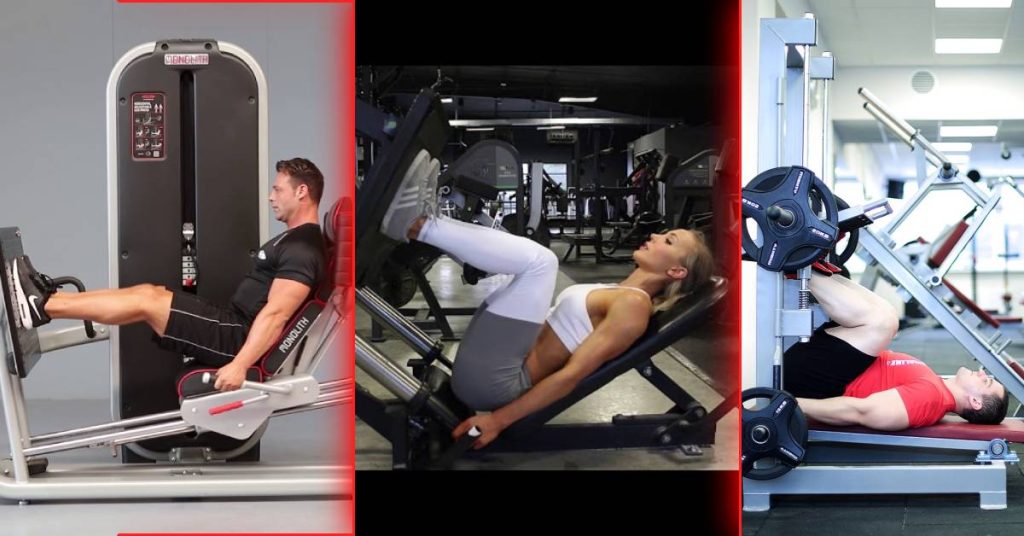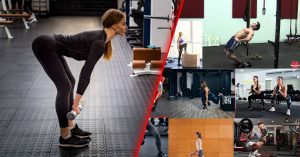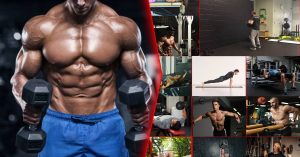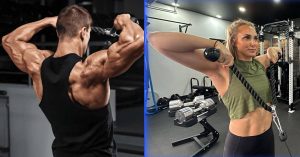Ever wondered why your leg workout feels incomplete? It could be the leg press machine you’re using. What if I told you that the secret to unlocking the full potential of your lower body workouts lies in the type of leg press machine you choose? Imagine achieving stronger, more defined legs with the right piece of equipment.
In the quest for peak physical fitness, the leg press machine stands out as a cornerstone for lower body development. Whether you’re decking out a home gym or seeking the best fit for commercial use, the choice of a leg press machine is pivotal.
This article embarks on a detailed comparison of horizontal, 45-degree, and vertical leg press machines, shedding light on the optimal pick for your needs. But why is this choice so crucial, and how can it make or break your fitness goals? Stay tuned as we delve into the world of leg press machines, where every detail counts in sculpting the perfect lower body.
Table of contents
MORE keyboard_double_arrow_down LESS keyboard_double_arrow_up
All You Need to Know About The Press Machine
Leg press machines, essential leg exercise equipment, vary in design, each promising a unique impact on your workout. Ranging from leg workout equipment to specialized leg press machines for home, understanding the nuances of each model is crucial for achieving your fitness goals.
So, what sets each type apart in the realm of strength training? Let’s break it down: From the sleek, space-saving horizontal models to the imposing stature of the 45-degree and vertical machines, each type brings something different to the table.
But It’s not just about pushing weights; it’s about targeting the right muscles in the right way. Each machine offers a unique interaction.
For some, comfort and ease of use take precedence, while others prioritize intensity and challenge. As we embark on this comparative journey, remember that the right leg press machine could be the missing link in your workout regimen.
Horizontal Leg Press Machines
Imagine sitting back, comfortably nestled into a chair, and pushing weights away with your feet. That’s the horizontal leg press machine for you. It’s not merely a piece of leg exercise equipment; think of it as your first step into the world of strength training.
The design is straightforward: you push against a platform that slides along a rail, moving weights as you extend your legs.
Pros
- The horizontal leg press is great for beginners, easy to use, and a good option for those new to weightlifting.
- The laid-back position gives extra support to the lower back, lowering the chance of strain or injury.
- Horizontal leg press machines are usually smaller and take up less space than other leg press machines.
Cons
- The horizontal setup might limit how far you can move compared to other leg press machines.
- The force may not be directly on your legs, which could make the exercise less effective.
45-Degree Leg Press Machines
Lorem ipsum dolor sit amet, consectetur adipiscing elit. Ut elit tellus, luctus nec ullamcorper mattis, pulvinar dapibus leo.
The 45-degree leg press, also called angled or incline leg press, has a seat tilted at a 45-degree angle. Users sit with their back against a cushioned support, pushing against a platform with their feet. This makes the platform slide up on a rail system, and the resistance comes from attached weight plates.
Pros
- This machine opens the door to deeper workouts, inviting your legs to stretch and strengthen beyond their usual limits.
- Every push is a direct challenge to your legs, ensuring that your efforts translate directly into muscle growth.
- It’s not just your quads that will thank you. Your glutes and hamstrings enter the fray, turning each session into a full-leg workout.
Cons
- The larger footprint of the 45-degree machine might have you measuring your gym space twice.
- The price tag is heftier, prompting a moment of reflection. Is the investment in line with your fitness goals?
Vertical Leg Press Machines
Vertical leg press machines have a distinctive design where users lie on their back, pushing against a vertically moving platform. Legs are positioned straight up, and the resistance is from weight plates attached to the machine.
Pros
- Every push against gravity with this leg push machine doubles as a push against your limits, offering a workout intensity that’s hard to match.
- Perfect for those who are short on space but big on ambitions, this machine tucks into the smallest of workout corners with ease.
- This isn’t just a leg day device; it’s a full-body challenge. Your legs, core, and every muscle in between get a piece of the action.
Cons
- The vertical leg press can be challenging for newcomers due to its unique position and increased difficulty.
- The upright position may strain the lower back and spine more than other leg press machines.
Choosing the Right Leg Press Machine According to Experts
Fitness experts universally acknowledge that selecting the right leg press machine can significantly impact your lower body workouts. Each type offers distinct advantages, designed to cater to different fitness levels and objectives. But what do they say about choosing the right leg press machine?
According to Mike Matthews, a certified personal trainer and the founder of Legion Athletics, it’s essential to consider your fitness goals and physical condition before choosing a leg press machine.
For instance, if you have knee or back issues, you may want to opt for a machine that allows for a more vertical leg position, such as a 45-degree or vertical leg press machine. On the other hand, if you’re looking to build maximal strength and power, a horizontal leg press machine may be more suitable.
Furthermore, Jim Smith, a strength coach and the founder of Diesel Strength & Conditioning, highlights the importance of prioritizing safety features when choosing a leg press machine.
For instance, look for machines with safety catches or locks that can prevent the weight from crushing you in case of failure. Also, make sure that the machine has a secure foot platform that won’t slip during use
Lastly, the following Instagram post by David Mathas, Health & Physique Coach addresses some common risks of leg press machines and why it’s important to use the right one:
Final Thoughts
The quest for the ultimate leg press machine is a personal journey, deeply intertwined with your fitness goals, the space you have available, and your unique preferences.
Whether you’re looking for a leg press machine for home or a bustling gym, each type of leg press machine brings its own signature benefits to the table. But the burning question remains: which one will become your trusted partner in your fitness journey?
Key Points
- They specifically work on the quadriceps, gluteal muscles, hamstrings, and calves, offering a comprehensive lower body workout.
- While the leg press machine focuses on the quads, hamstrings, and glutes, squats engage a broader range of muscles, including the back and core, due to the need for balance.
- Leg press exercises do not target belly fat directly. Fat loss requires a holistic approach, where high-intensity exercises and calorie management play crucial roles.
- Incorporating the leg press into your routine can lead to bigger legs by targeting essential muscle groups, but it should be part of a varied leg workout for best results.
- Your selection should be based on personal fitness goals, available space, and preferences, with each type of leg press machine offering unique benefits.
- Different types of leg press machines (horizontal, 45-degree, and vertical) cater to different fitness levels and space considerations, with specific advantages in muscle engagement and workout intensity.
- Horizontal leg press machines are highlighted for their ease of use and compact design, making them suitable for beginners and those with limited space.
- Vertical leg press machines offer intense resistance and full-body engagement, suitable for those seeking challenging workouts in compact spaces.
- These machines require more space and investment but provide a deeper range of motion and muscle engagement.
- Fitness experts agree that the right leg press machine can significantly impact your lower body strength training, with each type catering to different needs and goals.
FAQs
What Does the Leg Press Machine Do to Your Body?
The leg press machine is a powerful tool for targeting and strengthening key muscle groups in your lower body. Specifically, it engages the quadriceps muscles at the front of your thighs, the gluteal muscles in your buttocks, the hamstring muscles at the back of your thighs, and your calves. This integrated approach helps in developing a strong, balanced lower body.
Leg Press vs. Squat: Which Exercise is Supreme?
Both leg presses and squats are valuable exercises for lower body strength, but they serve different purposes. The leg press machine focuses primarily on the quadriceps, hamstrings, and glutes, with potential engagement of the calves.
Squats, however, require balance and thus engage a wider range of muscles, including the back and core. While squats work more muscles and offer additional benefits, the leg press is a great way to specifically target and strengthen the lower body without the same degree of balance and coordination.
Does Leg Press Reduce Belly Fat?
Directly targeting belly fat through leg press exercises is a misconception. While engaging in weight exercises like the leg press can contribute to overall weight loss and muscle building, it does not specifically target fat loss around the core.
Weight loss is influenced by a combination of factors, including hormonal responses from high-intensity interval training (HIIT) exercises and the fundamental principle of calories in versus calories out.
Does Leg Press Increase Thigh Size?
Yes, the leg press can significantly contribute to building bigger legs. It targets crucial muscle groups in the legs such as the quadriceps, hamstrings, and glutes.
However, for optimal results, the leg press should be incorporated as part of a comprehensive leg workout routine. Variety in your workout ensures balanced muscle growth and prevents overuse injuries, making your leg training more effective overall.

ABOUT THE AUTHOR
Follow Valen Steven for a dose of fitness enthusiasm, evidence-based advice, and a roadmap to achieving your health and wellness goals.
Subscribe to our Newsletter
Dive into a world of fitness and wellness with our exclusive newsletter! Sign up now and receive weekly power-packs of fitness wisdom




